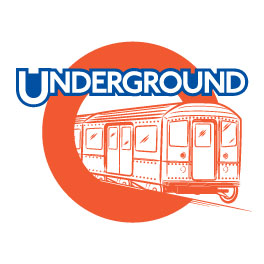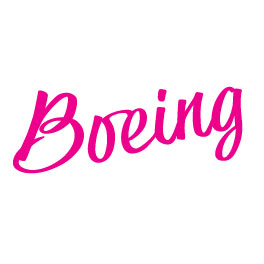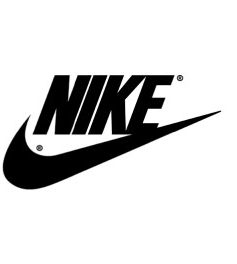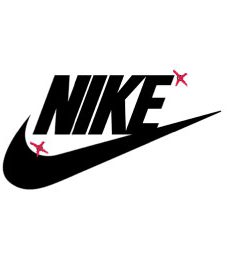If a good logo helps a business and a bad logo inhibits one, then how do we tell them apart?
Abstract | Executive Summary | TL;DR
A bad logo can inhibit a good organization. A logo is intended to be a mental shortcut to past experiences with a brand, hopefully bringing up good feelings.
1) A good logo is distinct, and not generic. If a logo is easily confused with other logos, then it is not useful.
2) A good logo is simple, and not complex. A visually complicated logo will be hard to recognize and hard for people to remember.
3) A good logo is appropriate, and not awkward. If a logo does not work when it is in context, then it is not appropriate for the company.
4) A good logo is striking, and not bland. A logo as a piece of graphic art should have an emotional hook.
5) A good logo is legally protectable, and not indefensible. A logo should be protected from a bad actor copying it and using it, so the organization needs to own the copyright of the logo and trademark.
6 minute read | 1500 words
The difference between a good logo and a bad logo could be the difference between a viral brand and a brand no one can get behind. While a good logo does not result in a good business, a bad logo will inhibit an otherwise good company.
A good logo is an effective logo, but what effect are we after? A logo is a shortcut to memories people of past experiences with the brand, and the attributes, classifications, and emotions therein. For example, when I see the Quiksilver logo, it connects me with surf culture, surf products and the zen feelings that come when you are on a surfboard on a wave.

A good logo is:
Distinct
A good logo unique enough to be easily recognized.

A bad logo is:
Generic
A bad logo is easily confused with other logos.
There is no point in having a logo if it is going to be similar to other brands that offer similar products and services. The viewer is going to be confused.
If a logo is too similar to other logos, then it is not going to be an active bookmark in people’s minds. Memories will be mixed up with other brands, or it will not be memorable at all.
Logos are brought into our brain by a process called iconic memory. Visual information comes in and out of our minds all the time; iconic memory is the process of taking that cascade of visual data and encoding it into shapes, patterns, and objects that can then have meaning. A logo needs to be distinct to be encoded.
An excellent logo is different from the logos of both it’s direct competition and all the logos of the culture. A unique logo will signal to the people looking at it that they offering of the brand is unique as well. A distinctive logo paired with an exceptional experience will build brand equity, and the logo will have meaning in the future.

A good logo is:
Simple
A good logo only has what it needs to get the job done.

A bad logo is:
Complex
A bad logo has unnecessary complexity built into it.
A simple logo has many benefits. They are easily perceived, easily remembered, and easy to maintain over time. The choice to add complexity needs to be justified by the other pillars in this list.

A simple logo is perceived quickly. A logo may only be viewed at a glance, flying down the road, or when scrolling through a page. A simple logo will be quicker for a viewer to acknowledge and more straightforward to encode into memory.
It is easier to keep a simple logo consistent over time. Rebranding to change a dated logo will throw away brand equity built into that logo. Design trends are tempory preferences, so eliminating anything from the logo that could be considered “trendy” will keep the logo from looking dated in the years to come. A simple logo will be immune to such trends.

A good logo is:
Appropriate
A good logo works when in context.

A bad logo is:
Awkward
Does not fit where it is displayed.
The appropriateness of a logo scored by how well it works in context. The logo needs to do its job within places it is displayed. The logo has to be appropriate in the context of its industry and the broader brand identity.
Some design choices are going to be more or less appropriate in different industries. A logo for a sports team is going to be different from that of a jeweler. The right choice for a toy store logo may be the worst choice for a five-star hotel. We talked about how font choice can make a brand appropriate or entirely inappropriate for an industry, but it goes beyond fonts.
A logo designer needs to tow the line between being distinct within the industry while still being appropriate for it. A logo becomes inappropriate when it conflicts with the tone of the industry. Somber topics, such as matters of health or the law, would be poorly served by a logo that is silly, comical or immature. On the flip side, a logo for a comedy festival would ideally be a joke itself.
A logo also needs to be versatile to work best in different environments. A poorly designed logo may disappear when placed on a dark or visually complicated background. A logo isn’t working if it is hard to read when it is small or viewed from a distance. It also needs to follow best practices for print and display, so that it’s color or clarity stays consistent.
A strong logo is also the starting point for more graphics. The logo and other parts of the identity should build towards the vision of the founder. We call this vision the brand image; it is how a company aims to be perceived. If a logo is not in keeping with the brand image, then it is not appropriate for the company and will most likely be rebranded.

A good logo is:
Striking
A good logo is exciting and meaningful to its viewer.

A bad logo is:
Bland
A bad logo is uninspired and quickly passed over.
We concluded that a good logo is a simple logo, but if it were that easy, then logos would be basic shapes such as circles, triangles, and squares.
An effective logo is powerful enough to remember. A memorable logo has a hook; it is different in an exciting way that creates an emotional connection.
A logo that spawns even the smallest emotional reaction is going to be more memorable. We all remember logos with the same circuitry as any other thing we experience; you and I are far more likely to remember an experience that was particularly fun, exciting, silly or embarrassing. The same is true for logos, but we try to stay away from embarrassing logos!

A good logo is:
Legally Protectable
A good logo is one the organization can defend with trademarks and copyright.

A bad logo is:
Indefensible
A bad logo is that would lose a legal challenge.
You are creating a brand because you would like it to be meaningful to potential customers. If you do build a meaningful brand, there are unscrupulous people out there that will use your logo and your brand equity for their gain. You need a legal lever to stop them, and those levers are copyright and trademarks.
However, I fear most organizations do not own their logo. The copyright of the logo needs to be transferred from the designer to the company by either a written declaration or a work for hire agreement. The designer’s work has to be completely original; they cannot copy another design or use stock vector art. If possible, the logo needs to be trademarked.
You might have seen some online merchant companies advertise their free logo makers as a value-add. These services pitch themselves as helpful but can cause the organization legal troubles and force them into expensive rebranding campaigns in the future. There is no recourse against another company from using the same logo made with the same logo maker.
Conclusion. It takes a professional logo designer to balance all these factors.
These are all forces that push and pull at one another. It takes a professional to balance them to create an effective logo. An amateur designer, online logo maker, or spec work platform may be able to generate logos that look good, but it takes someone with experience and a deep understanding of the organization they are designing for to make an effective logo.
Now It’s Time To Take Action to Build Your Brand
If you are a designer, look at your upcoming logo projects under the lens of this article. Are you considerate of all five?
If you are an entrepreneur or professional marketer, look at your logo and appreciate and scrutinize based on these five principles, one by one.

Leave a Reply